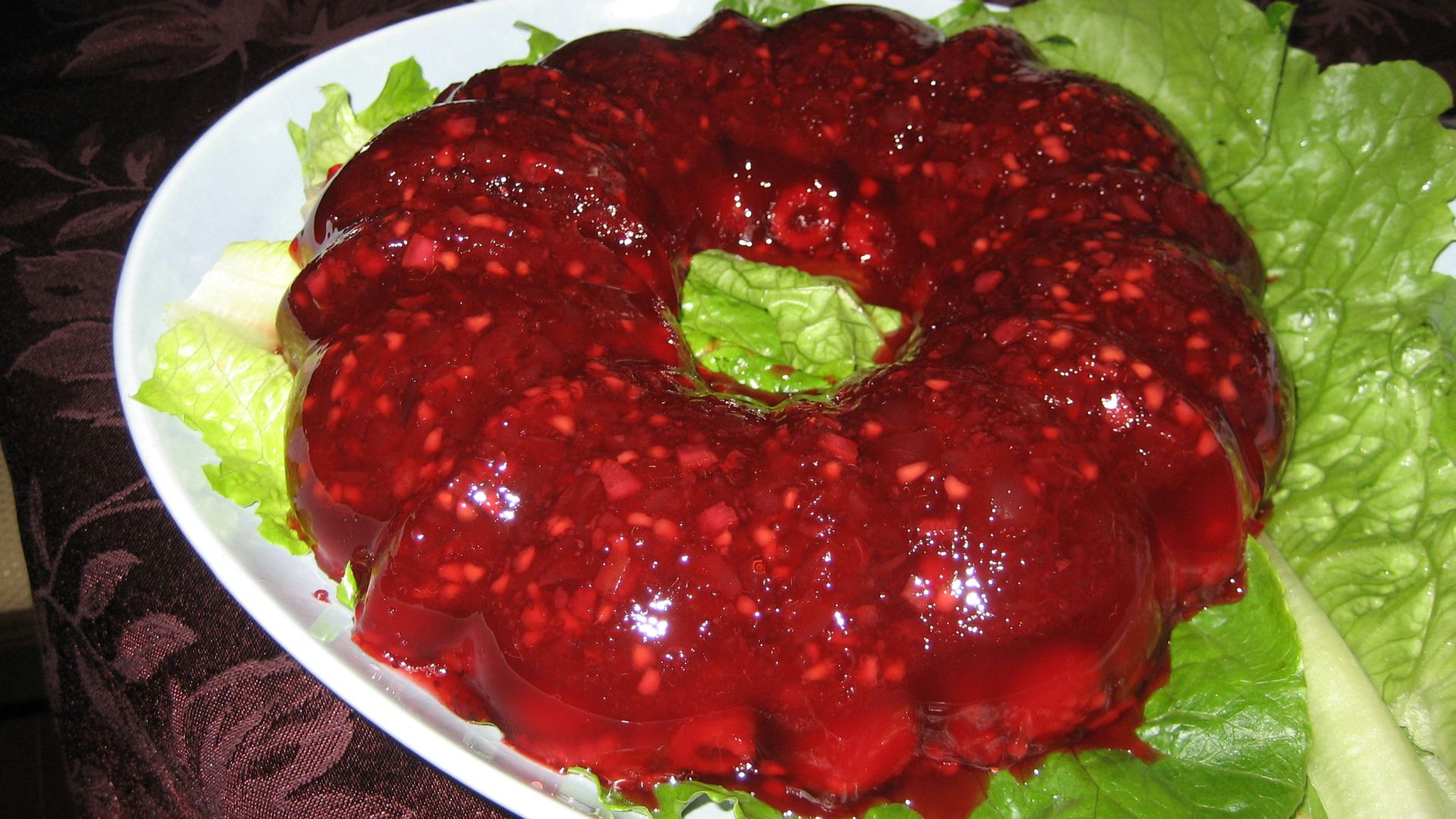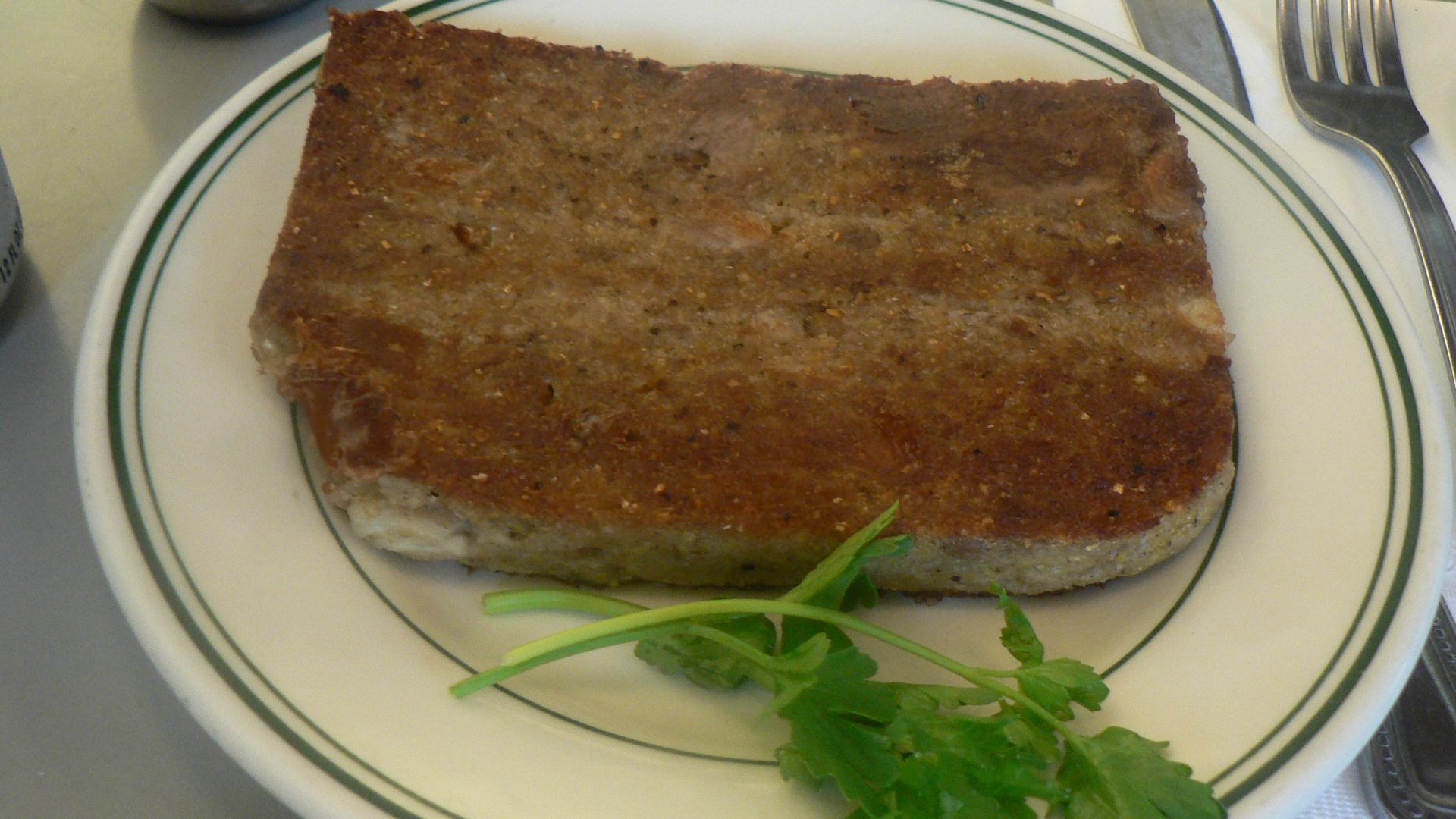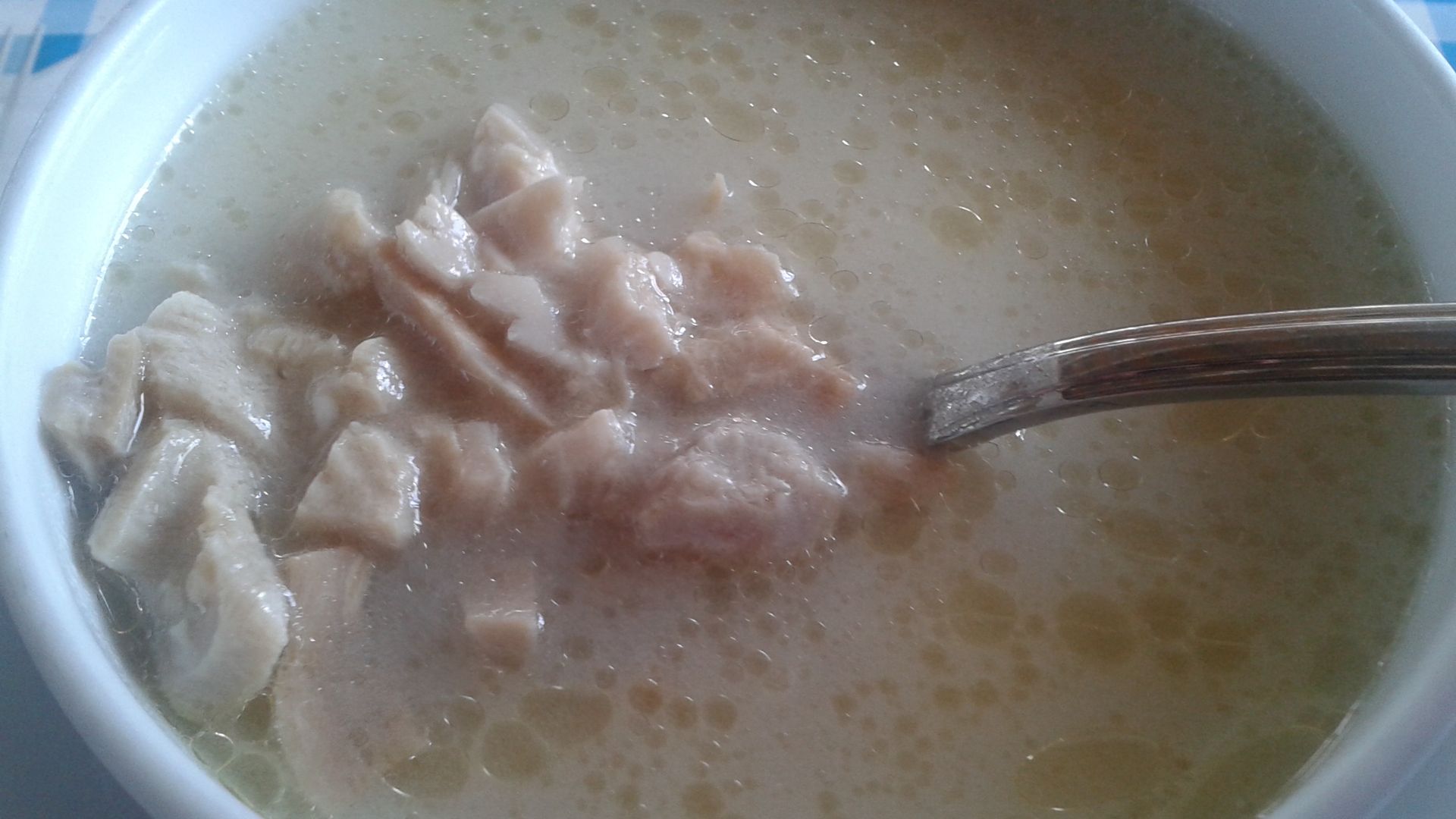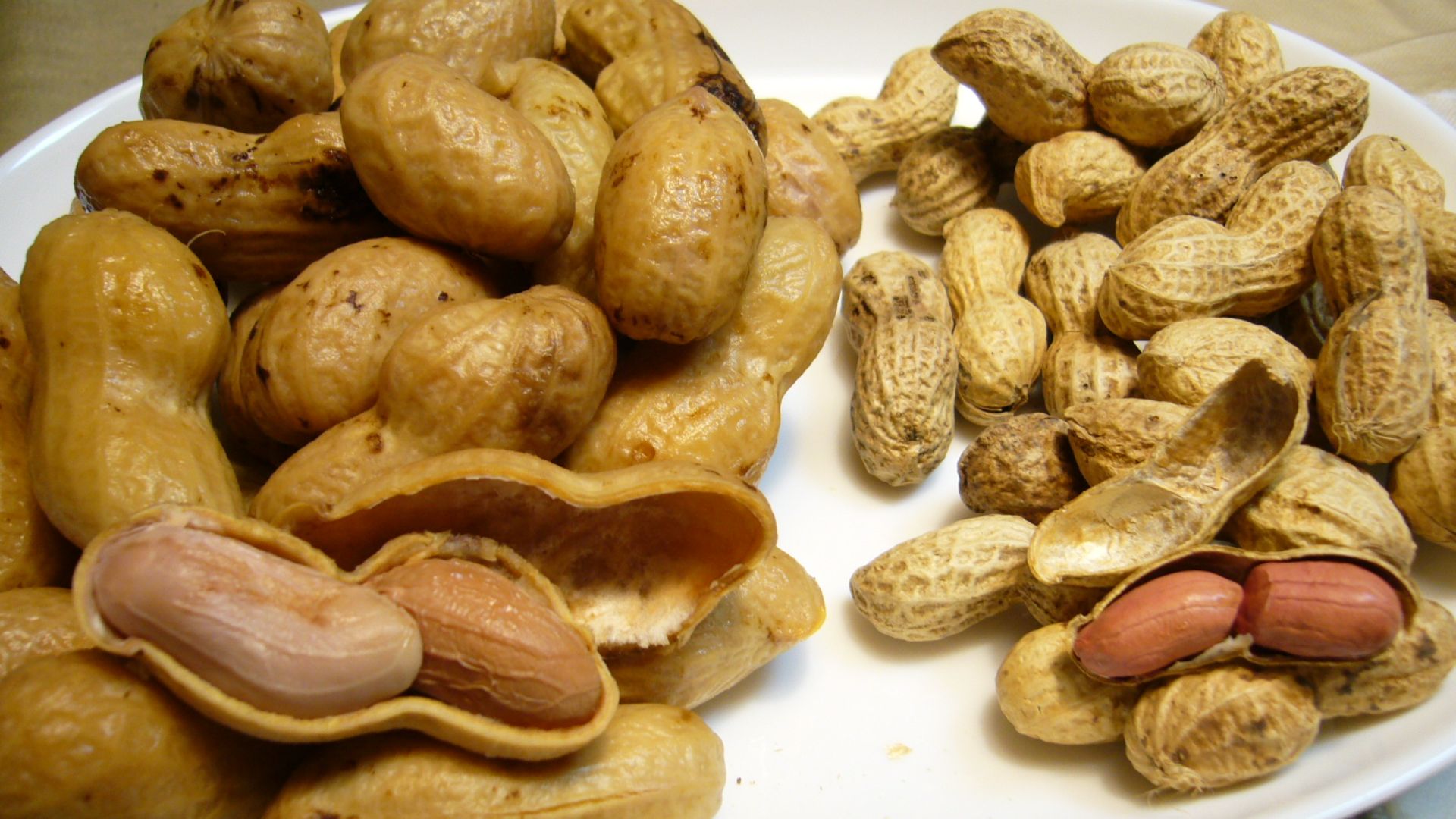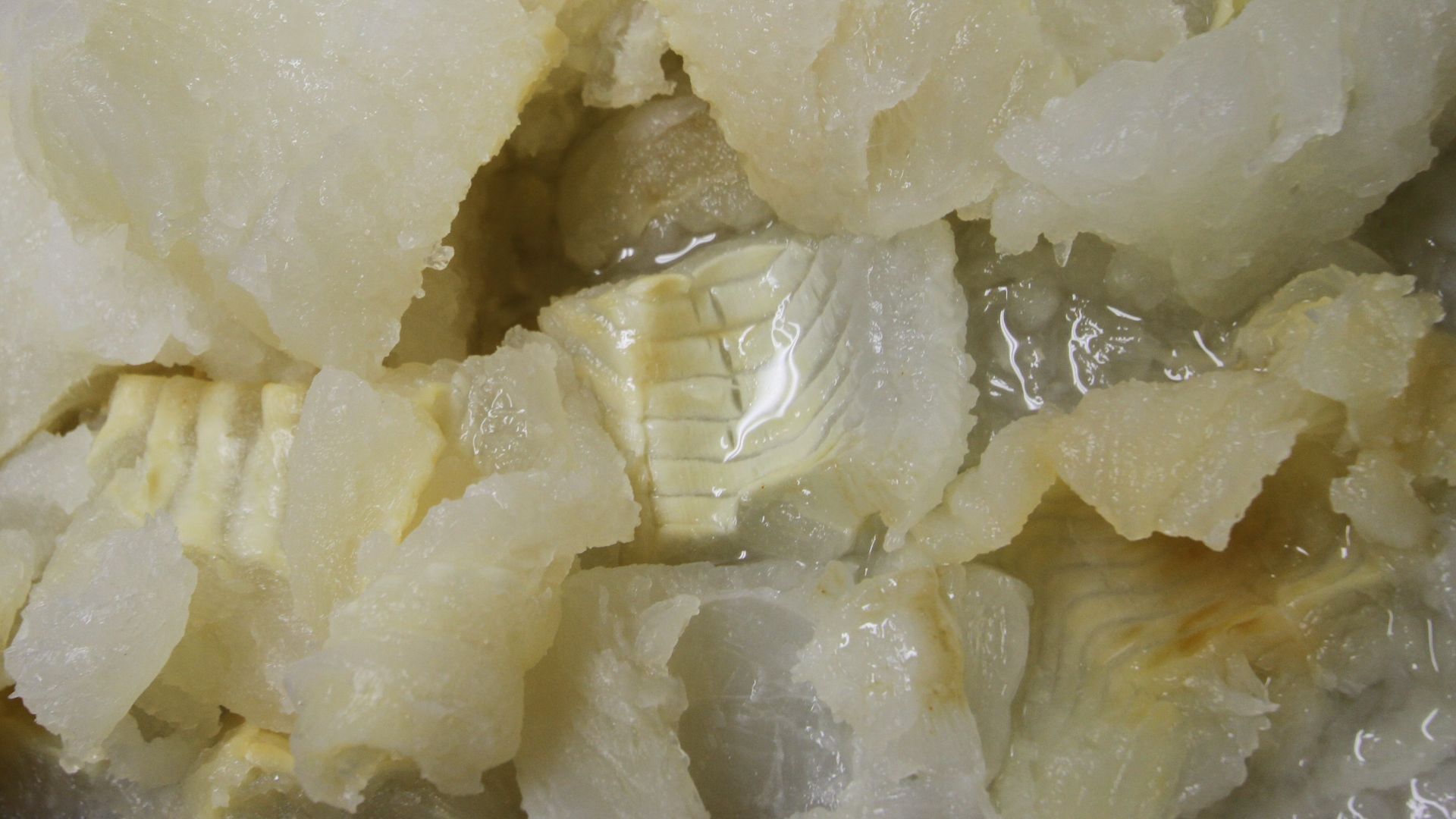Flavors From A Bygone Era
Food trends shift constantly, but some dishes stick around, even as they puzzle modern taste buds. These meals, once beloved traditions or bold culinary experiments, have stood the test of time. Some are sweet, others savory, and a few may leave you questioning everything. Now, let’s take a closer look at the quirky foods that older generations hold dear.
1. Jell-O Salads
Jell-O salads were once a popular dish, featuring colorful gelatin mixed with fruits, vegetables, or even meats. They became a mid-century staple, often served at family gatherings and holiday meals. Though the trend has faded, these wobbly creations still hold a place in the hearts of those who remember them.
2. Liver And Onions
This iron-rich and intensely flavored dish peaked in popularity during the Great Depression when organ meats were economical. Sautéed onions mask the liver’s strong taste, making it slightly more palatable. Older generations swear by its nutritional value, but younger eaters tend to reject its metallic aftertaste.
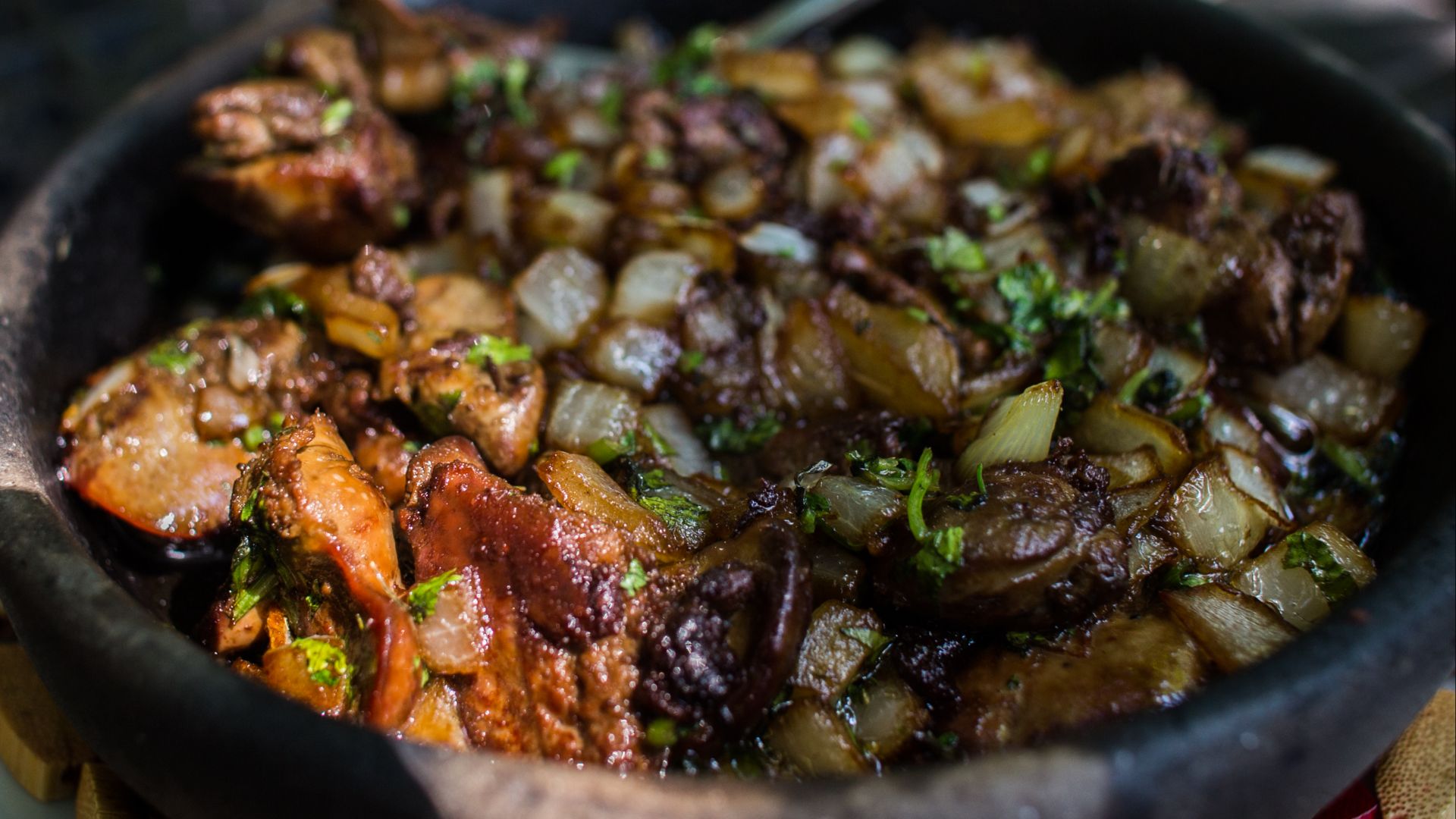 Jon Gudorf Photography on Wikimedia
Jon Gudorf Photography on Wikimedia
3. Pickled Pigs’ Feet
Pickled pigs’ feet were a 19th-century staple that turned humble scraps into a briny, gelatinous delicacy. Butchers preserved them in tangy vinegar, making them last longer and pairing them perfectly with a cold beer in smoky taverns. Older generations still swear by their rich collagen content.
 How to Make Pickled Pigs Feet - Food from the South by 2 Guys & A Cooler
How to Make Pickled Pigs Feet - Food from the South by 2 Guys & A Cooler
4. Spam
Ever wonder what’s inside that mysterious pink brick of meat? Introduced in 1937, Spam kept soldiers fed during WWII and became a 1950s kitchen staple. Cheap and oddly versatile, it starred in casseroles and sandwiches. Younger generations, however, eye its gelatinous sheen with deep suspicion.
5. Sardines On Toast
Love or leave them, sardines on toast have stood the test of time. Packed with Omega-3s and plenty of punch, these salty little fish kept wartime pantries stocked and frugal kitchens thriving. They're a no-fuss classic that can be smashed or enjoyed straight from the tin.
6. Cottage Cheese With Fruit
Once the darling of 1970s diet culture, this lumpy, creamy combo was hailed as the guilt-free answer to dessert. It became a breakfast-table staple, high in protein and low in fat, often crowned with canned peaches or pineapple. Though Greek yogurt has stolen the spotlight, cottage cheese remains a loyal classic.
 HEALTHY Pineapple Salad Cottage Cheese Recipe by The Protein Chef
HEALTHY Pineapple Salad Cottage Cheese Recipe by The Protein Chef
7. Chitterlings (Chitlins)
Would you eat something that needs to be scrubbed for hours before cooking? Once a survival food, chitterlings became a beloved soul food staple, boiled or fried to perfection. Their unmistakable aroma clears a room, and for many, holidays wouldn’t be complete without one.
 HOW TO COOK CHITTERLINGS/ HOG MAWS TOGETHER! # chitterlings #chittlins by According To Jeff
HOW TO COOK CHITTERLINGS/ HOG MAWS TOGETHER! # chitterlings #chittlins by According To Jeff
8. Scrapple
Ever wonder what happens to the parts of a pig that don’t make it into bacon? Enter Scrapple, a 17th-century Pennsylvania Dutch invention that turned leftover pork scraps and cornmeal into a breakfast favorite. Loved for its savory center, it’s a tradition that still sizzles in Mid-Atlantic kitchens.
9. Ambrosia Salad
A technicolor relic of mid-century potlucks, ambrosia salad is as sweet as perplexing. Dating back to 19th-century Southern cookbooks, the creamy concoction blends canned fruit and marshmallows under a fluffy cloud of whipped topping. For some, it’s a festive treat; for others, it’s dessert gone rogue.
 Marshall Astor from Olympia, WA, United States on Wikimedia
Marshall Astor from Olympia, WA, United States on Wikimedia
10. Bologna Sandwiches
Some still fry it to crispy perfection, while others have moved on to fancier deli meats. Cheap and nostalgic, the bologna sandwich has long been a lunchbox and diner staple. This processed sausage of uncertain origins found its way between slices of white bread, often with a squirt of mustard.
 Old Fashioned Bologna Sandwich by Mama Ray Ray In The Kitchen
Old Fashioned Bologna Sandwich by Mama Ray Ray In The Kitchen
11. Prune Whip
The true purpose of the prune whip was to serve as a digestive aid. With its combination of prunes, which are known for their natural laxative properties, and a fluffy texture from whipped egg whites, it was marketed as a health-conscious treat designed to promote regularity. However, despite its well-intentioned benefits, it has since faded from popularity.
 Prune whip!!! by Recipe Redemption
Prune whip!!! by Recipe Redemption
12. Cornbread And Milk
For some, it’s a relic of tough times; for others, it’s the ultimate comfort food. Crumbled cornbread soaked in milk has been a simple, satisfying staple for generations. Although modern diners keep their cornbread dry and buttered, plenty of elders still enjoy it by the spoonful.
 Cornbread and Milk in Appalachia by Celebrating Appalachia
Cornbread and Milk in Appalachia by Celebrating Appalachia
13. Mayo And Banana Sandwiches
A baffling combination that gained traction in the rural South during the early 20th century, this sandwich paired creamy mayonnaise with sweet bananas. It was born from necessity and became an oddly beloved snack. Now, most dismiss it as an unfortunate relic of culinary improvisation.
 Dale Earnhardt Jr.'s "BANANA & MAYO" Sandwich REVIEW! by JoeysWorldTour
Dale Earnhardt Jr.'s "BANANA & MAYO" Sandwich REVIEW! by JoeysWorldTour
14. Blood Sausage (Black Pudding)
Dark and dense, blood sausage has been a staple for centuries, feeding farmers and soldiers. Made by mixing fresh blood with grains and spices, it becomes a rich, savory bite once cooked. Older generations still enjoy it fried alongside eggs or sliced into stews, savoring the deep, iron-heavy flavor.
15. Tripe Soup
Tripe soup, made from slow-cooked cow stomach, has been a staple for working-class families for centuries. Its hearty, rich broth and tender texture offer a comforting, deeply satisfying flavor. Prepared with patience, this dish holds a special place in the hearts of many cultures around the world.
16. Head Cheese
Did you know that head cheese contains no cheese at all? Instead, it’s a mosaic of meat from a boiled pig’s head, set in natural gelatin. Brought to America by European immigrants, it was a butcher’s essential, prized for its frugality. It survives mainly in old-school delicatessens and Eastern European kitchens.
17. Boiled Peanuts
Older generations crack them open without a second thought, savoring the salty, briny softness. An essential of the South, boiled peanuts have been enjoyed for centuries, their slow-simmered texture turning the usual crunch into something entirely different. Roadside vendors still sell them warm in paper bags.
18. Pineapple Sandwiches
Imagine biting into soft white bread slathered with mayonnaise, only to be met with the tangy sweetness of canned pineapple. A relic of mid-century Southern cuisine, the odd pairing is a sweet-and-savory combination that baffled outsiders but won over many who grew up with it.
 Pineapple Sandwich For Lunch by Southern Country Living
Pineapple Sandwich For Lunch by Southern Country Living
19. Lutefisk
Some traditions refuse to fade, no matter how slippery they are. Lutefisk, a dish brought to America by Scandinavian immigrants, begins as dried whitefish before undergoing a lye-soaking process that turns it into a gelatinous, translucent delicacy. Love it or leave it, lutefisk endures, one wobbly bite at a time.
20. Tomato Aspic
There was a time when turning tomato juice into a quivering, gelatinous mold was considered the height of sophistication. Tomato aspic, a darling of early 20th-century hostesses, arrived at dinner tables studded with olives, celery, or even shrimp. It was served in delicate rings and was a showpiece of refined dining.
KEEP ON READING




